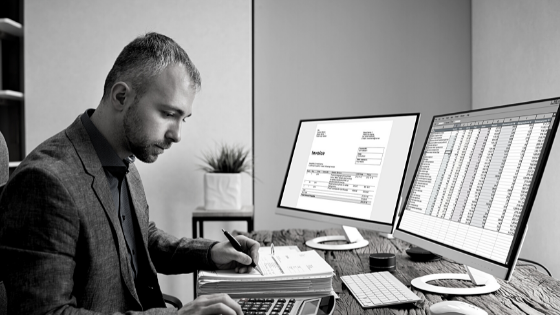Small businesses are the backbone of the Australian economy, accounting for more than 98% of all businesses in Australia.
Thankfully, the Australian Taxation Office (the ATO) offers these small businesses several tax incentives as a result – and one of the most significant of those incentives is the small business pool simplified depreciation rule.
Instead of depreciating business assets over their prescribed effective life, the ATO allows small business owners to potentially depreciate their plant and equipment at an accelerated rate. And taking advantage of your depreciation deductions could make a significant difference to your bottom line.

So, here are a few things every business owner should know when it comes to utilising the small business pool to your advantage.
The Benefits of Tax Deprecation
As a building and its assets get older, they decrease in value due to natural wear and tear. This is known as depreciation. However, depreciation isn’t necessarily a bad thing for business owners.
This is because the ATO allows business owners (and investors) to claim depreciation as a tax deduction, provided that you are using the assets or property to generate an income.
Typically, when it comes to claiming deductions for the general wear and tear on plant and equipment assets, they depreciate at a rate according to the ATO’s Asset Effective Life Schedule, which gives guidance on how many years an asset is effective before it’s worn out. The ATO recognises more than 6,000 different assets that investors can claim tax deductions on.
However, to help make the process of claiming tax deductions simpler, the ATO introduced simplified depreciation rules for small businesses.
One of these rules relates to small business pooling.
What is Small Business Pooling?
Essentially, by pooling your plant and equipment assets together, the ATO allows you, as the business owner, to claim depreciation deductions at an accelerated rate instead of claiming them according to the prescribed effective life.
The rule essentially allows business owners to pool their higher costing business-use assets together and claim:
- a 15% deduction in the year that you started using the asset or installed it ready to be used, and
- a 30% deduction each year after the first year.
Generally, higher-cost assets are classified as those that cost more than or equal to the relevant instant asset write-off threshold. And once the pool balance is less than the threshold, business owners can deduct the entire balance of the pool at the end of the income year.
What is the Instant Asset Write-Off Threshold?
The instant asset write-off rule is another simplified depreciation method that small business owners can use to maximise their depreciation deductions. According to the rule, business owners can claim a tax deduction for an asset in the same year that they first used it or installed it.
Generally, you can only use the instant asset write-off rule if the asset is below the prescribed threshold value. However, until 30 June 2022, the general eligibility criteria is slightly different so as to afford the rule more businesses across Australia, in the wake of the economic crisis brought on by the worldwide coronavirus pandemic.
So, until 30 June 2022, businesses with a turnover up to $5 billion, can claim the total cost of the asset using the instant asset write-off rule – meaning there is no threshold amount.
As a result, until the end of the 2021-22 financial year, the small business pool can only be used for businesses with a turnover over $5 billion per year.
How Do You Calculate Your Small Business Pool?
The ATO prescribes the following five steps when calculating your small business pool.
Step 1: Determine Opening Balance
You will need to calculate your opening balance by multiplying the cost of each asset (its adjustable value) by the proportion of the asset used for business purposes (the taxable purpose proportion).
Example:
Mia holds the following depreciating assets that she used for her small business in June 2021:
| A car with an adjustable value of $39,750, which she uses 70% of the time for business purposes | $39,750 x 70% = $27,825 |
| Her small office space (i.e. a granny flat) has an adjustable value of $41,000 which she solely uses for the business | $41,000 x 100% = $41,000 |
These assets are added to Mia’s small business pool, bringing the opening balance to $123,456. For each following year, the opening balance of the small business pool for the year will be the closing balance from the previous year.
Step 2: Add Newly Acquired Assets
You need to add any assets (new or second hand) that you acquired during the financial year to the opening balance. You should also add any additional costs that you may have spent on improving existing assets.
Example:
Mia bought another car for $33,000 for her employee to use. The car is solely used for business purposes so that the entire amount will get added to the pool.
Step 3: Reduce the Pool if Assets Were Sold
If you sold an asset during the financial year, you would need to reduce your pool balance by the termination value (i.e. the sale price).
If the asset is proportionally used for business and private purposes, the pool would have to be reduced by the termination value x the taxable purpose proportion.
Example:
Mia didn’t dispose of any assets during the financial year.
For more information regarding the disposing of assets, you can read up on the ATO’s website.
Step 4: Calculate Pool Deduction
Step four requires calculating your deduction for existing assets (30%) and newly acquired assets (15%).
Example:
Mia’s calculation will be as follows:
| Existing Assets | New Assets |
| Car:
$27,850 x 30% = $8,355 |
Car:
$33,000 x 15% = $4,950 |
| Office:
$41,000 x 30% = $12,300 |
|
| Total: $20,655 | Total: $4,950 |
Step 5: Calculate Closing Balance
In the final step, you must calculate the small business pool’s closing balance for the financial year. The closing pool balance will take into account the assets you purchased or improved, the assets you disposed of and the deductions for the pool assets.
Example:
Mia’s small business pool closing balance is calculated as follows:
| Opening balance | $123,456 |
| plus the adjustable value of new assets
Car |
+ $33,000 |
| less the termination value of disposed of assets
None |
– $0 |
| Subtotal | = $156,456 |
| less the deductions
Existing Assets |
– $20,655 |
| less the deductions
New Assets |
– $4,950 |
| Closing balance | =$130,851 |
Mia’s opening balance for the next income year will be this year’s closing pool balance ($130,851).
What Happens Once the Pool’s Value is Less than the Threshold?
Once the pool balance is less than the instant asset write-off threshold, you can deduct the entire balance.
For example, the instant asset write-off threshold for the 2019-20 financial year was $150,000. So, once the value of the small business pool is below $150,000, you can claim a deduction for the pool’s entire value.
Key Takeaways
With the general small business pool rules, Australian business owners can now depreciate their plant and equipment items at an accelerated rate. This makes it easier to maximise cash flow each year by decreasing your tax outgoings with depreciation deductions.
While the ATO proposes a five-step calculating method, the small business pool depreciation deduction can get a bit complicated. That is why it pays to get in touch with an experienced depreciation expert.





















